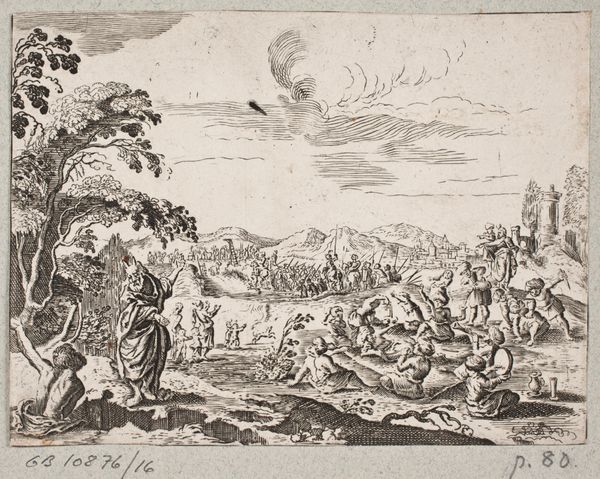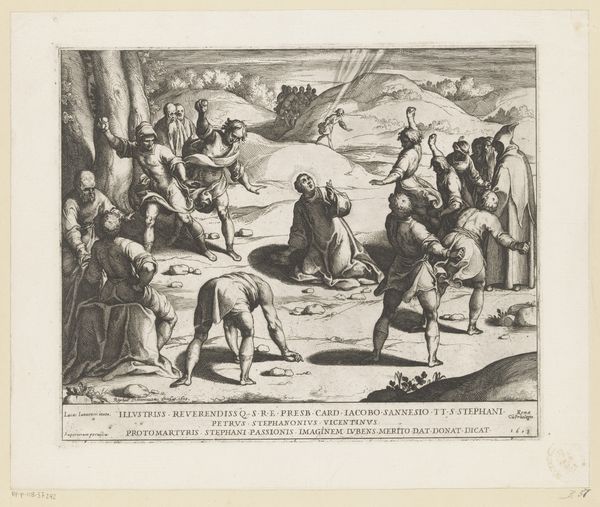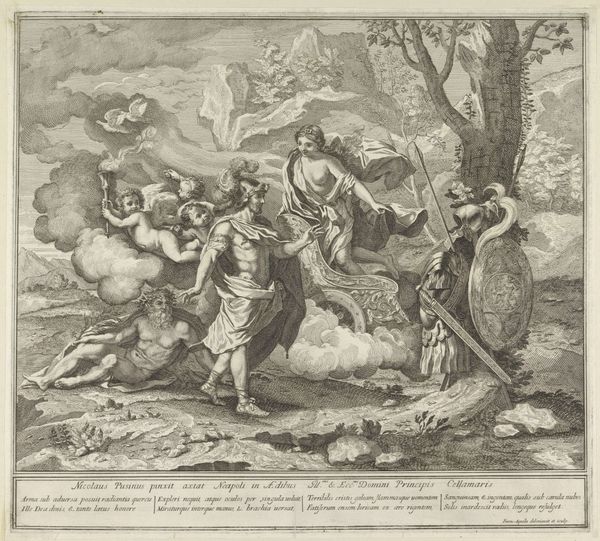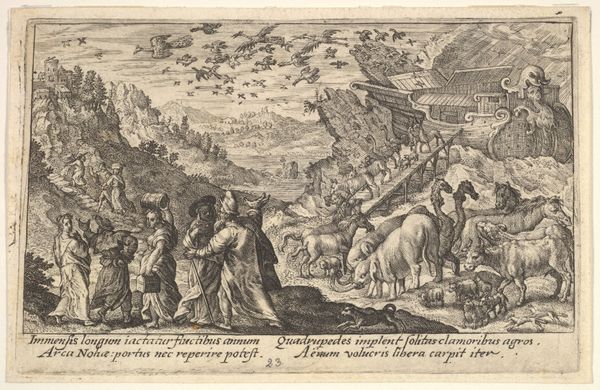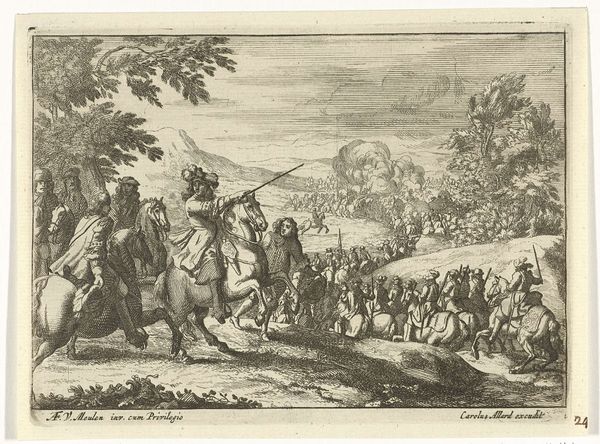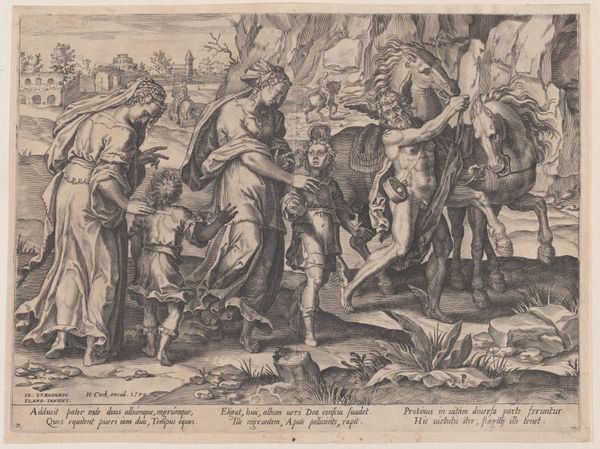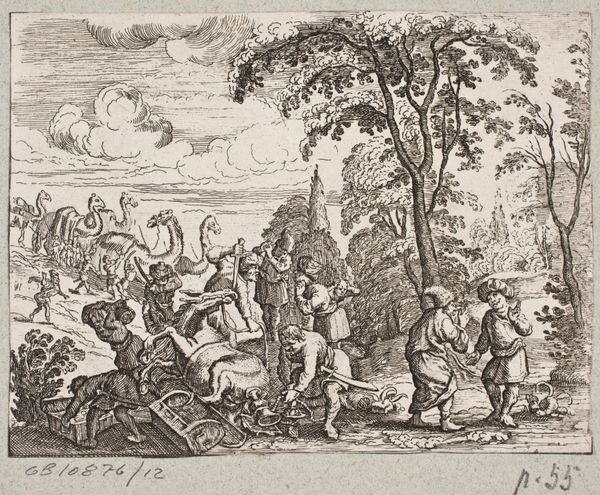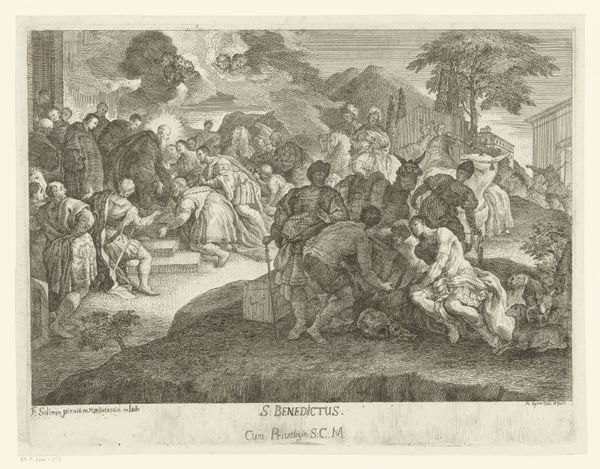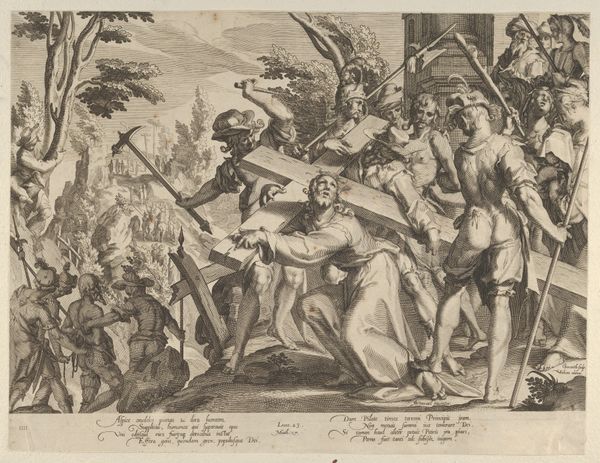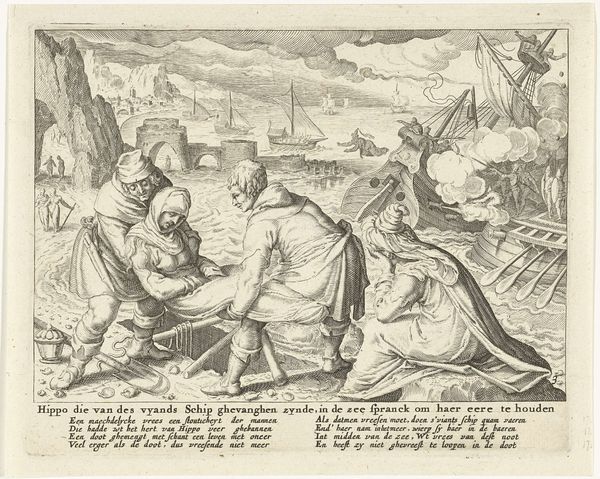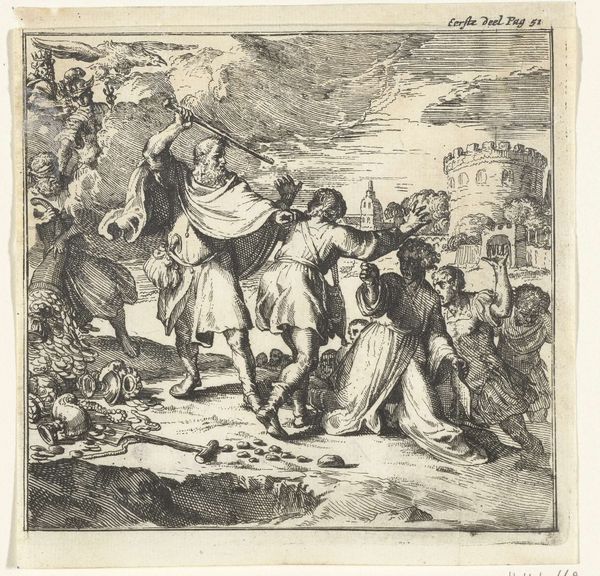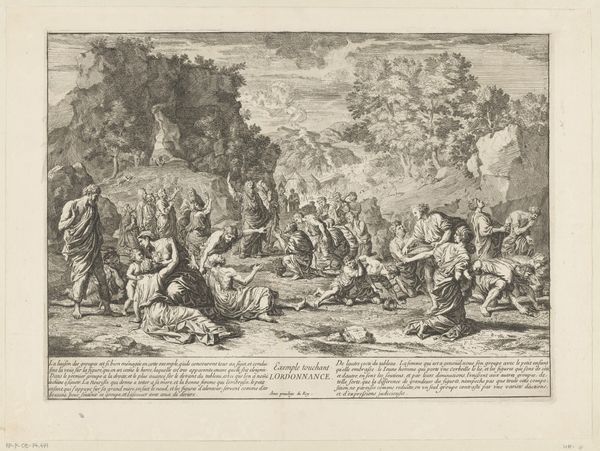
God enters into a covenant with Noah: next to a smoking pyre Noah kneels in a gesture of prayer, surrounded by members of his family, a rainbow stretches over them, from "Liber Genesis" 1612
0:00
0:00
drawing, print, paper, ink, engraving
#
drawing
#
ink drawing
#
baroque
#
pen drawing
# print
#
paper
#
ink
#
history-painting
#
engraving
Dimensions: Sheet: 3 7/16 x 5 5/16 in. (8.7 x 13.5 cm) Plate: 3 1/4 x 5 in. (8.2 x 12.7 cm)
Copyright: Public Domain
Curator: Looking at this, my first thought is "relief." The fine lines give a sense of almost fragile hope rising after such utter devastation. Editor: It’s interesting you say that. We're looking at "God enters into a covenant with Noah," an engraving by Crispijn de Passe the Elder, dating back to 1612. It’s part of his "Liber Genesis" series and currently resides at the Metropolitan Museum of Art. Considering the context of its creation, that feeling is really amplified, isn't it? Europe was no stranger to calamity at the time. Curator: Absolutely. The delicate nature of the lines used to depict such a grand moment, the rainbow, the ark in the distance barely suggested…it all feels very tentative, a promise whispered rather than shouted. I mean, look at the faces; they're etched with worry even amidst gratitude. Editor: Exactly, that covenant is far from a simple absolution. The rainbow itself is a powerful symbol. We often see it now as this emblem of inclusivity, but within the religious context that De Passe was working in, it's a potent reminder of divine power and the potential for future destruction. A fragile promise indeed, draped over a society still reckoning with massive losses from flood, as well as famine, plague, and persistent religious wars. Curator: Right. And you see the animals slowly making their way back into the world—almost comically, in such precise little strokes. But there's a beauty there too, a stubborn refusal to yield. It mirrors human resilience. Editor: That element of perseverance resonates powerfully. When placed against the backdrop of historical crises and societal inequalities, it underscores art’s critical ability to visualize not only moments of celebration, but also the weight of collective trauma and the cautious navigation of the future, of renewed promises. Curator: It's more than just a biblical story, isn't it? It’s about rebuilding in the aftermath, about faith flickering in the darkness, and the difficult journey to find solid ground again. Editor: And finding solidarity amidst that rebuilding, recognizing the spectrum of emotions inherent to healing.
Comments
No comments
Be the first to comment and join the conversation on the ultimate creative platform.

